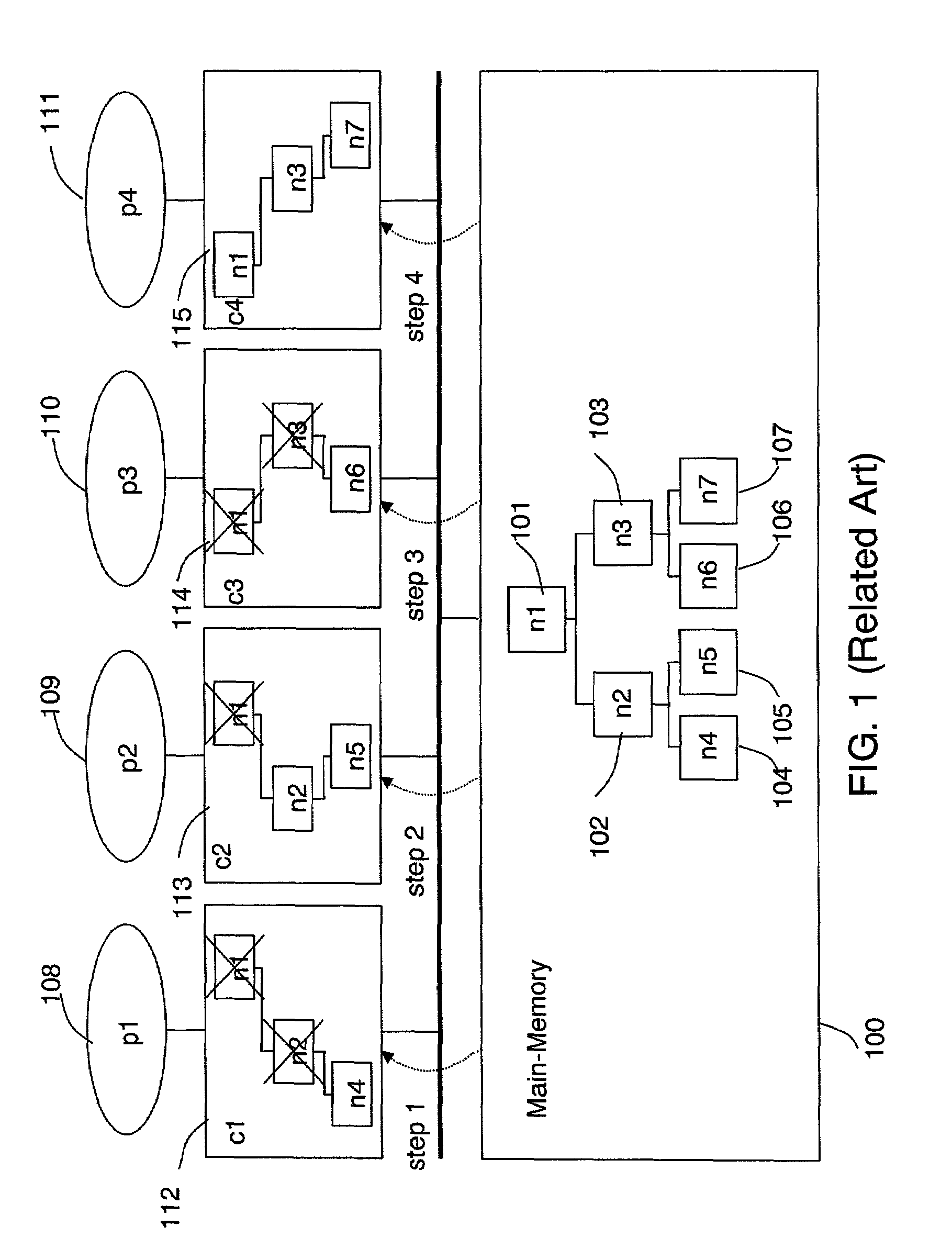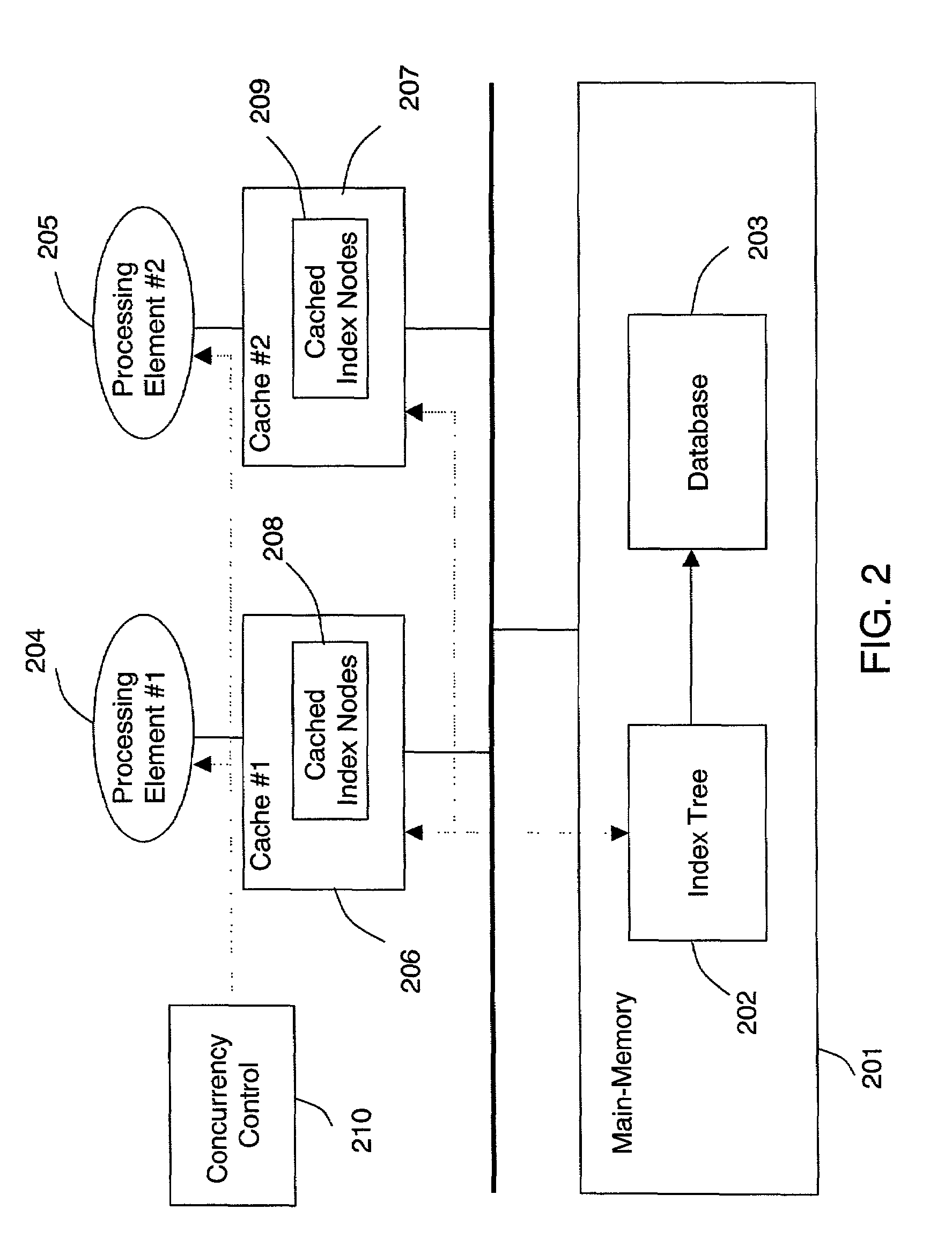Cache-conscious concurrency control scheme for database systems
a database system and concurrency control technology, applied in the field of database management systems, can solve the problems of increasing the update cost, not being effective, and not coming automatically, and achieve the effect of efficient index structur
- Summary
- Abstract
- Description
- Claims
- Application Information
AI Technical Summary
Benefits of technology
Problems solved by technology
Method used
Image
Examples
Embodiment Construction
I. Concurrency Control
Coherence Cache Miss
[0032]FIG. 1 illustrates how coherence cache misses occur in a query processing system having a conventional database management system (DBMS). A DBMS is a collection of programs for managing the database structure and controlling access to the database. There is an index tree consisting of nodes, n1 through n7 (101 through 107), in main memory 100 for accessing a database in disk or in main memory. It is assumed for simplicity that that each node corresponds to a cache block and contains a latch. As noted above, a latch guarantees unique access to a data item by a transaction. There are 4 processors 108 through 111 accessing the main memory 100 through caches 112-115.
[0033]Let's consider a situation where processor p1108 traverses the path (n1101, n2102, n4104) upon cold start of the main memory query processing system, so that these nodes are replicated in cache c1112 of p1108. Latches are held and released on n1 and n2 on the way. Now, p2...
PUM
 Login to View More
Login to View More Abstract
Description
Claims
Application Information
 Login to View More
Login to View More - R&D
- Intellectual Property
- Life Sciences
- Materials
- Tech Scout
- Unparalleled Data Quality
- Higher Quality Content
- 60% Fewer Hallucinations
Browse by: Latest US Patents, China's latest patents, Technical Efficacy Thesaurus, Application Domain, Technology Topic, Popular Technical Reports.
© 2025 PatSnap. All rights reserved.Legal|Privacy policy|Modern Slavery Act Transparency Statement|Sitemap|About US| Contact US: help@patsnap.com



